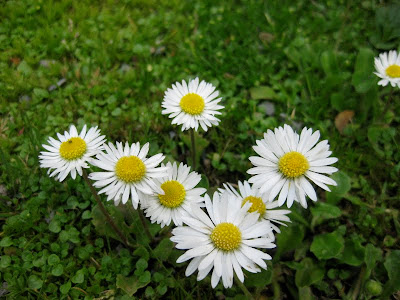 |
| SJG 6/16/11 • Acer palmatum 'Shishigashira', Lion's Mane Maple; E side of the top N path, Area N |
 |
| SJG 6/16/11 • Acer palmatum 'Shishigashira', Lion's Mane Maple; close-up, very dainty leaves, Area N |
This on the plant from Elisabeth Carey Miller Botanical Garden:
Acer palmatum ‘Shishigashira‘, commonly called the lion’s head maple, is a very popular and striking cultivar. This is a slow upright grower with dense tufts of crinkled deep green foliage on each branch, looking somewhat like the mane of a lion. The leaves are resistant to burning in full sun and develop a good golden yellow fall color brushed with red-orange. It tends to be one of the latest Japanese maples to color in the fall. Shishigashira makes a great container plant . When placed in the garden it has a sculptural feel that only improves with age.
More here...
• Acer palmatum, Japanese maple:
 |
| SJG 6/16/11 • Acer palmatum, Japanese maple - leaves cinnamon shade; on the E path, by the water, Area H |
 |
| SJG 6/16/11 • Acer palmatum, Japanese maple - leaves cinnamon shade; Area H |
 |
| SJG 6/16/11 • Acer palmatum, Japanese maple - leaves cinnamon shade; its color caught our attention from across the pond, so we walked there, to look at it; Area H |
No clue what type of japanese maple this exactly is, but here a few websites, if you'd like to hunt:
• Information on Japanese Maple Trees
• Fair weather gardens (looks similar to 'Iijima Sunago', but not sure about the green spots, need to look closer)
• Acer
• Amber Hill Nursery
• Rhododendron 'Jindai', Azalea:
 |
| SJG 6/16/11 • Rhododendron 'Jindai', Azalea - corolla white with pink sectors; W path, S of waterfall, by the crab apple tree; Area X |
 |
| SJG 6/16/11 • Rhododendron 'Jindai', Azalea - corolla white with pink sectors; Close-up, Area X |
 |
| 13 days later: SJG 6/29/11 • Rhododendron 'Jindai', Azalea - corolla white with pink sectors |
• Rhododendron yakushimanum, rhododendron:
 |
| SJG 6/16/11 • Rhododendron yakushimanum, rhododendron - corolla pink, fades to white, suede leaves; 3 of them on the service road, Area ZZE |
 |
| SJG 6/16/11 • Rhododendron yakushimanum, rhododendron - corolla pink, fades to white; Area ZZE |
 |
| SJG 6/16/11 • Rhododendron yakushimanum, rhododendron; suede leaves underneath, the white new growth is leaf, NOT flower, Area ZZE |
'Also, the term for the soft, velvet-like brown underside of the Yakushimanum is 'indumentum'. - soft hairy covering.'
From wikipedia on the subject:
The indumentum is a covering of fine hairs or bristles (rarely scales) on a plant[1] or insect.
In plants, the indumentum types are:
pubescent
hirsute
pilose
villous
tomentose
stellate
scabrous
scurfy
The use of an indumentum on plants can be pollen-related to propagate the plant or simply protective, or even decorative due to mutations. The use of an indumentum on insects can also be pollen-related, as on bees, sensory like whiskers, or for varied other uses including adhesion and poison.
On the plant from 'Journal American Rhododendron Society':
Rhododendron yakushimanum, known outside Japan for just 50 years, was quickly accepted as one of the most beautiful rhododendrons in the world, and its popularity becomes ever greater. This species is found wild only on Yakushima, an island about 26 kilometers (16 miles) in diameter, located 60 kilometers out in the ocean from the south tip of Japan. At latitude 30° north, the coastal part of this island is subtropical enough for sugar cane and a mangrove swamp, yet the central mountains are high enough to provide a good rhododendron environment. The tallest peak, Mt. Miyanoura, reaches 1935 meters (6348 feet), but Mt. Kuromi, at 1836 meters (6024 feet) is more rocky toward the summit, making it a better rhododendron peak. These and all surrounding mountains are composed of granite, which decays to an open, porous soil favored by rhododendrons in southern Japan.
• Acer palmatum 'Inazuma':
 |
| SJG 6/16/11 • Acer palmatum 'Inazuma' - leaves bright like lightning; right past entrance to the garden and Garden booth, E side of the path, Area C |
 |
| SJG 6/16/11 • Acer palmatum 'Inazuma' - leaves bright like lightning; close-up leaves, Area C |
On the plant from Shoot:
'Inazuma' _ 'Inazuma' is a mid-sized, deciduous tree or shrub with deeply divided leaves that are rich deep purple red in spring and early summer, turning dark green, then red-crimson in autumn with green veins.
• White water lily - will have to research that tomorrow, now just a pic:
 |
| SJG 6/16/11 • water lilies |
• A visitor asked us about the ground cover at the entrance: definitely not not moss, so what else could that be? Turned out corsican mint - Mentha requieni, in area C:
 |
| Corsican mint, close-up |











































